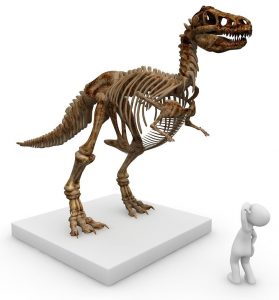
You may have misread the title as the old correlation does not imply causation mantra, but the opposite is also true! If you don’t believe me, read on…
Continue reading “Causation doesn’t imply Correlation either“
Category: Machine Learning
Posts about machine learning
Understanding AdaBoost – or how to turn Weakness into Strength

Many of you might have heard of the concept “Wisdom of the Crowd”: when many people independently guess some quantity, e.g. the number of marbles in a jar glass, the average of their guesses is often pretty accurate – even though many of the guesses are totally off.
The same principle is at work in so-called ensemble methods, like bagging and boosting. If you want to know more about boosting and how to turn pseudocode of a scientific paper into valid R code read on…
Continue reading “Understanding AdaBoost – or how to turn Weakness into Strength”
Learning R: The Ultimate Introduction (incl. Machine Learning!)

There are a million reasons to learn R (see e.g. Why R for Data Science – and not Python?), but where to start? I present to you the ultimate introduction to bring you up to speed! So read on…
Continue reading “Learning R: The Ultimate Introduction (incl. Machine Learning!)”
Google’s Eigenvector, or How a Random Surfer Finds the Most Relevant Webpages

Like most people, you will have used a search engine lately, like Google. But have you ever thought about how it manages to give you the most fitting results? How does it order the results so that the best are on top? Read on to find out!
Continue reading “Google’s Eigenvector, or How a Random Surfer Finds the Most Relevant Webpages”
Symbolic Regression, Genetic Programming… or if Kepler had R

A few weeks ago we published a post about using the power of the evolutionary method for optimization (see Evolution works!). In this post we will go a step further, so read on…
Continue reading “Symbolic Regression, Genetic Programming… or if Kepler had R”
Learning Data Science: Predicting Income Brackets

As promised in the post Learning Data Science: Modelling Basics we will now go a step further and try to predict income brackets with real world data and different modelling approaches. We will learn a thing or two along the way, e.g. about the so-called Accuracy-Interpretability Trade-Off, so read on…
Continue reading “Learning Data Science: Predicting Income Brackets”
Evolution works!

Hamlet: Do you see yonder cloud that’s almost in shape of a camel?
Polonius: By the mass, and ’tis like a camel, indeed.
Hamlet: Methinks it is like a weasel.
from Hamlet by William Shakespeare
Customers who bought…

One of the classic examples in data science (called data mining at the time) is the beer and diapers example: when a big supermarket chain started analyzing their sales data they encountered not only trivial patterns, like toothbrushes and toothpaste being bought together but also quite strange combinations like beer and diapers. Now, the trivial ones are reassuring that the method works but what about the more extravagant ones? Does it mean that young parents are alcoholics? Or that instead of breastfeeding they give their babies beer? Obviously, they had to get to the bottom of this.
Continue reading “Customers who bought…”
So, what is AI really?

One of the topics that is totally hyped at the moment is obviously Artificial Intelligence or AI for short. There are many self-proclaimed experts running around trying to sell you the stuff they have been doing all along under this new label.
When you ask them what AI means you will normally get some convoluted explanations (which is a good sign that they don’t get it themselves) and some “success stories”. The truth is that many of those talking heads don’t really know what they are talking about, yet happen to have a friend who knows somebody who picked up a book at the local station bookshop… ok, that was nasty but unfortunately often not too far away from the truth.
So, what is AI really? This post tries to give some guidance, so read on!
Continue reading “So, what is AI really?“
Learning Data Science: Modelling Basics

Data Science is all about building good models, so let us start by building a very simple model: we want to predict monthly income from age (in a later post we will see that age is indeed a good predictor for income).
Continue reading “Learning Data Science: Modelling Basics”
